Welcome to our comprehensive guide on hip stretches! Whether you’re an athlete, an office worker, or someone who leads a sedentary lifestyle, taking care of your hips is crucial for maintaining mobility, preventing injuries, and reducing discomfort.
| This article is medically reviewed by Dr Harcharanjit Singh Randhawa |
In this article, we will delve into the importance of hip stretches, their benefits, and provide you with a variety of effective exercises to keep your hips flexible and healthy.
Hip Stretches : Unlocking the Key to Mobility
Our hips play a significant role in our daily lives. From walking and running to sitting and standing, our hip joints are constantly in motion. However, due to various factors such as prolonged sitting, poor posture, or repetitive movements, the muscles around our hips can become tight and inflexible.
This lack of flexibility can lead to discomfort, reduced range of motion, and even injuries. By incorporating hip stretches into your daily routine, you can unlock the key to improved mobility and overall well-being.
The Benefits of Hip Stretches
- Improved Flexibility : Regularly performing hip stretches can increase the flexibility of the muscles surrounding the hip joint, allowing for a wider range of motion.
- Reduced Discomfort : Tight hip muscles can cause discomfort and pain in the hips, lower back, and legs. Stretching these muscles can help alleviate these symptoms and promote a more comfortable daily experience.
- Enhanced Performance : Whether you’re an athlete or a fitness enthusiast, flexible hips can improve your performance in various activities, such as running, dancing, or weightlifting.
- Injury Prevention : Flexible hip muscles can help prevent common injuries, such as strains, sprains, and hip impingement, by ensuring proper alignment and reducing unnecessary stress on the joints.
Now that we understand the importance and benefits of hip stretches, let’s dive into some effective exercises that can help you maintain healthy and flexible hips.
Hip Stretches for Improved Flexibility
1. Quadriceps Stretch
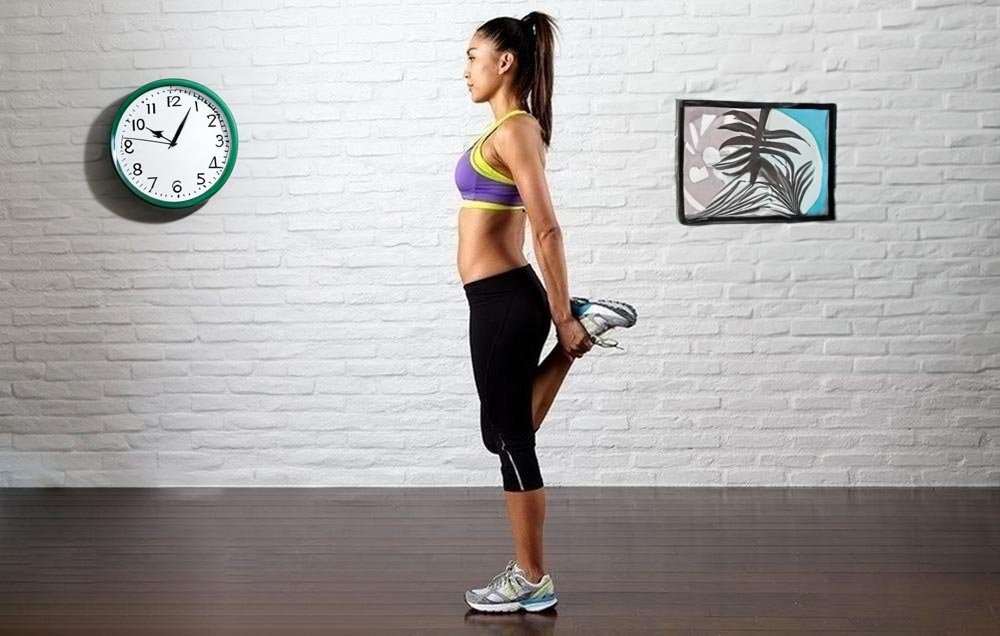
To perform the quadriceps stretch :
- Stand upright with your feet hip-width apart.
- Lift your left foot off the ground and bend your knee, bringing your left heel toward your glutes.
- Reach back with your left hand and grab onto your left foot or ankle.
- Gently pull your left foot toward your glutes until you feel a stretch in the front of your left thigh.
- Hold the stretch for 20-30 seconds, then switch sides.
This stretch targets the front thigh muscles, including the quadriceps, and helps improve flexibility in the hips.
2. Pigeon Pose
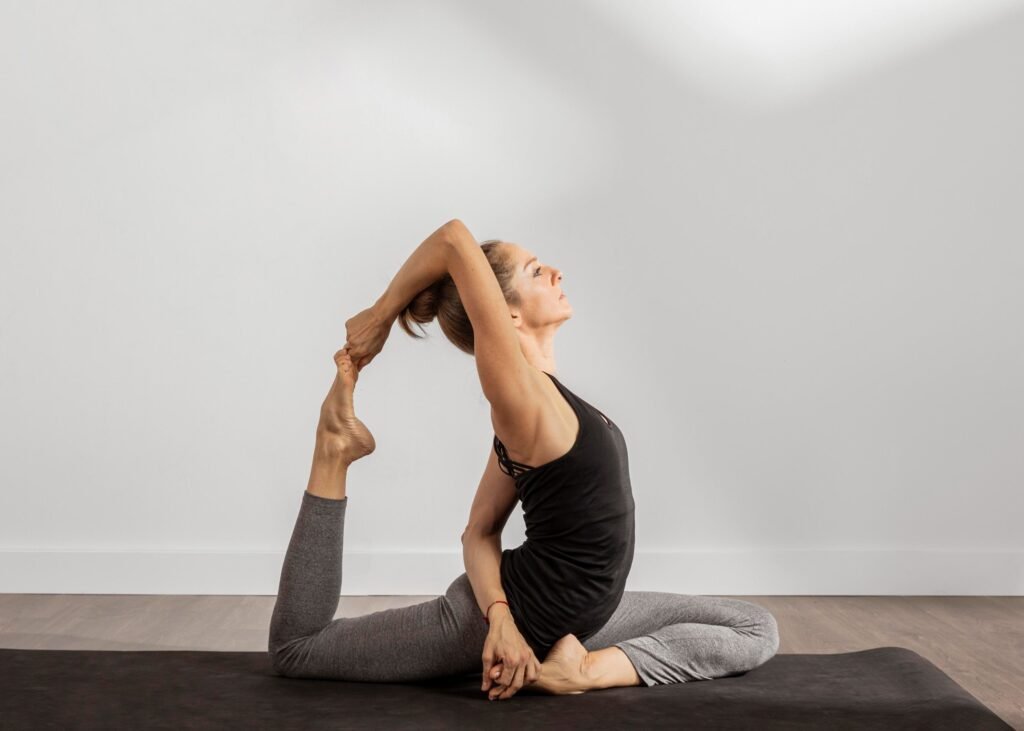
The pigeon pose is a popular yoga stretch that targets the hip flexors and glutes. To perform the pigeon pose:
- You start by your hands and knees on the ground in a table position.
- Bring your right knee forward and, behind the right wrist, insert it.
- Just behind you, extend your left leg.
- Slowly lower your upper body down, resting your forearms on the ground or a yoga block.
- Hold the stretch for 30 seconds to 1 minute, then switch sides.
The pigeon pose is an excellent stretch for opening up the hips and releasing tension in the hip flexors.
3. Butterfly Stretch
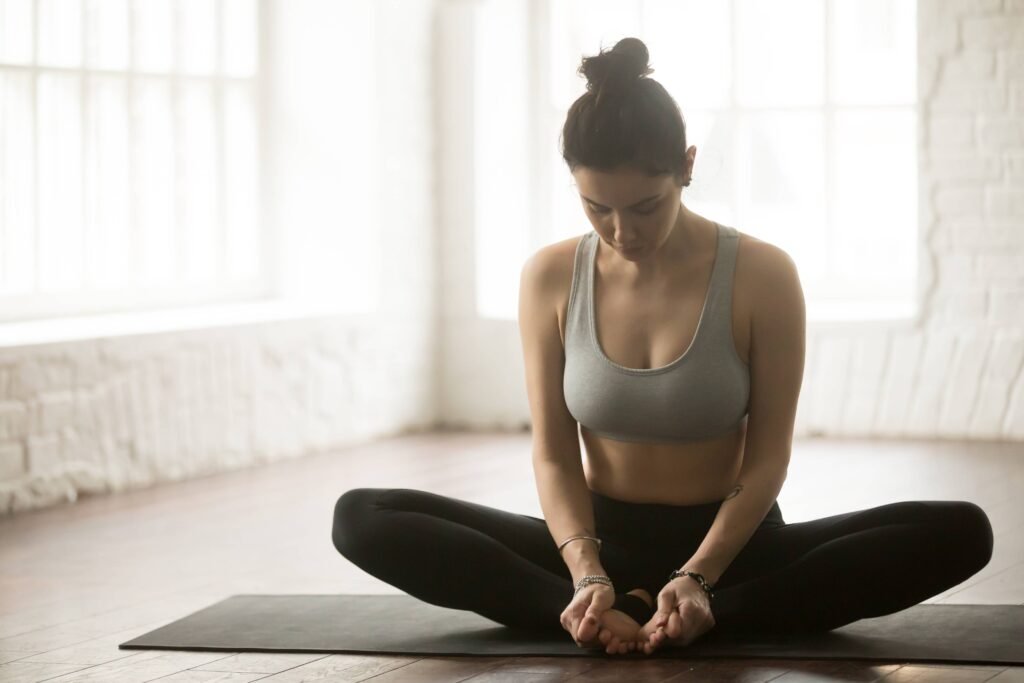
The butterfly stretch targets the inner thighs and hip joints. To perform the butterfly stretch:
- Sit on the ground with a straight back and bend your knees, bringing the soles of your feet together.
- With your hands, hold on to the legs or feet.
- Gently press your knees toward the ground while keeping your back straight.
- Hold the stretch for 20-30 seconds, then release.
The butterfly stretch helps improve hip flexibility and can alleviate tightness in the inner thigh muscles.
4. Hip Flexor Stretch
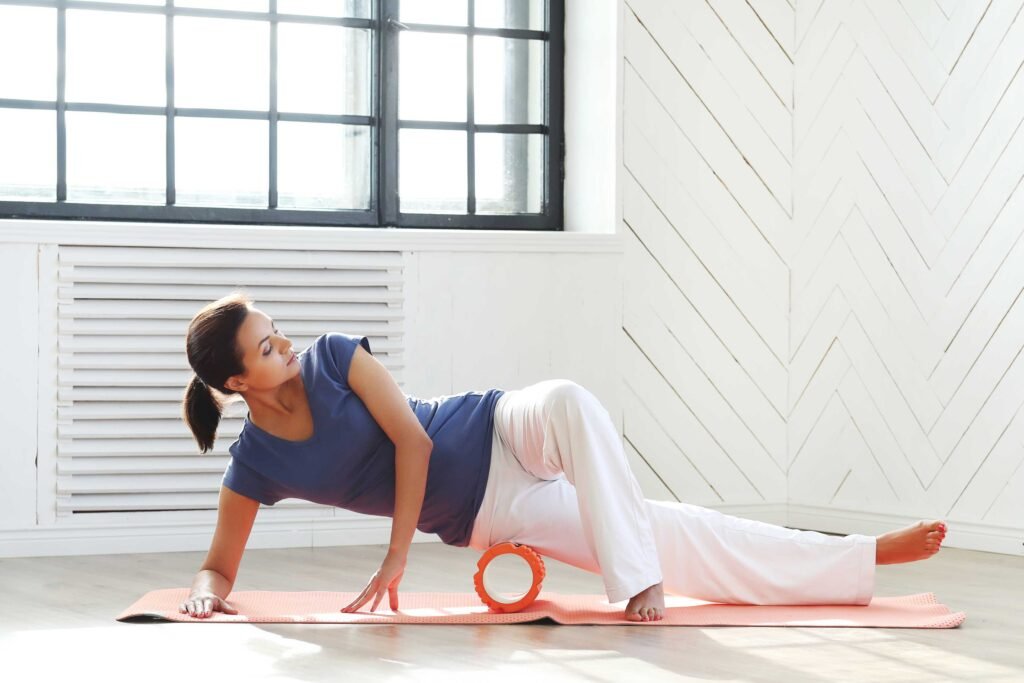
Tight hip flexors can contribute to hip and lower back pain. To stretch the hip flexors:
- Kneeling on the right knee with your left foot resting flat against the ground before you.
- Maintain a straight back and engage your core.
- Lean forward slightly, shifting your weight onto your left leg.
- You’re going to be feeling a stretch in the outermost part of your hip.
- Hold the stretch for 20-30 seconds, then switch sides.
This stretch targets the hip flexor muscles and can help relieve tension in the hips and lower back.
5. Standing Forward Fold
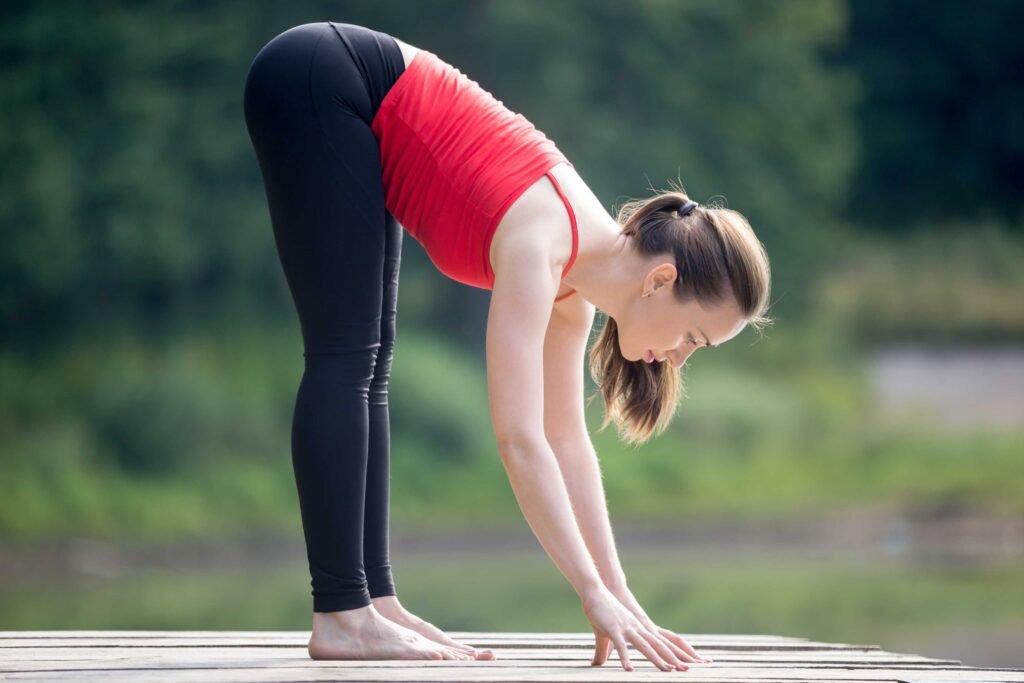
The standing forward fold is a gentle stretch that releases tension in the hamstrings and lower back. To perform this stretch:
- Bend your legs hip-width from each other, and slowly turn away from the hips.
- Let your upper body hang over your legs and allow your arms to dangle freely.
- If you must, stretch your knees a little.
- Feel the stretch in the back of your thighs and lower back.
- Hold the stretch for 20-30 seconds, then slowly come back to standing position.
The standing forward fold promotes hip flexibility while also stretching the hamstrings and lower back.
These are just a few examples of effective hip stretches that can help improve flexibility and relieve discomfort. Remember to always listen to your body and perform the stretches within your comfort level. If you experience any pain or discomfort, it’s advisable to consult with a healthcare professional.
Frequently Asked Questions (FAQs)
FAQ 1 : Why are hip stretches important ?
Hip stretches are important because they help maintain the flexibility and mobility of the hip joints. They also alleviate tightness in the surrounding muscles and reduce the risk of injuries.
FAQ 2 : How often should I perform hip stretches ?
Ideally, you should aim to perform hip stretches at least 3-4 times per week. However, if you have a specific condition or discomfort, it’s best to consult with a healthcare professional for personalized recommendations.
FAQ 3 : Can hip stretches help with lower back pain ?
Yes, hip stretches can help with lower back pain. Tight hip muscles can contribute to lower back discomfort, and stretching them can provide relief by releasing tension in the hips and improving overall flexibility.
FAQ 4 : Can I perform hip stretches before exercise ?
Yes, performing hip stretches before exercise is a great way to warm up the muscles and prepare them for physical activity. Dynamic stretches, such as leg swings or lunges, are particularly beneficial for pre-workout hip mobility.
FAQ 5 : Can hip stretches improve my athletic performance ?
Yes, incorporating hip stretches into your fitness routine can improve your athletic performance. Flexible hips allow for a wider range of motion, better movement mechanics, and reduced risk of injuries, ultimately enhancing your overall performance.
FAQ 6 : Are there any precautions to consider while performing hip stretches ?
When performing hip stretches, it’s important to avoid pushing through pain. Stretch to a comfortable point and never force your body into a position that feels unnatural. Check with your healthcare professional before starting the new stretching routine if you have any preexisting medical conditions or concerns.
Conclusion
Taking care of your hips through regular stretching is essential for maintaining mobility, preventing injuries, and reducing discomfort. By incorporating the hip stretches mentioned in this article into your daily routine, you can improve flexibility, alleviate tightness, and enhance overall Hip Health.
Remember to start with gentle stretches and gradually increase the intensity as your flexibility improves. Consistency is key when it comes to reaping the benefits of hip stretches, so make it a habit to dedicate time to this important aspect of your fitness routine.
In addition to the stretches mentioned above, there are various other exercises and stretches that can target specific hip muscles and contribute to improved flexibility.
Some examples include hip circles, glute bridges, and lunges. Experiment with different stretches and find the ones that work best for your body and specific needs.
Incorporating hip stretches into your daily life doesn’t have to be a complicated process. You can easily integrate them into your warm-up routine before exercise, incorporate them into your cooldown routine, or simply set aside dedicated time each day to focus on your hip mobility.
To enhance the effectiveness of your hip stretches, consider the following tips:
- Proper Form : Ensure that you maintain proper form throughout each stretch. This includes aligning your body correctly and avoiding unnecessary strain or tension.
- Breathing : Focus on deep breathing while performing the stretches. Inhale deeply through your nose and exhale slowly through your mouth, allowing your body to relax and your muscles to release.
- Gradual Progression : Start with stretches that feel comfortable and gradually increase the intensity or duration over time. Listen to your body’s signals and avoid pushing yourself too far too soon.
- Variety : Incorporate a variety of hip stretches into your routine to target different muscle groups and promote overall flexibility.
- Rest and Recovery : Allow your body ample time to rest and recover between stretching sessions. This will help prevent overuse injuries and ensure optimal muscle health.
Remember, the key to effective hip stretching is consistency and patience. Results may not be immediate, but with regular practice, you will notice improvements in your flexibility, range of motion, and overall comfort. For more Health And Fitness .


